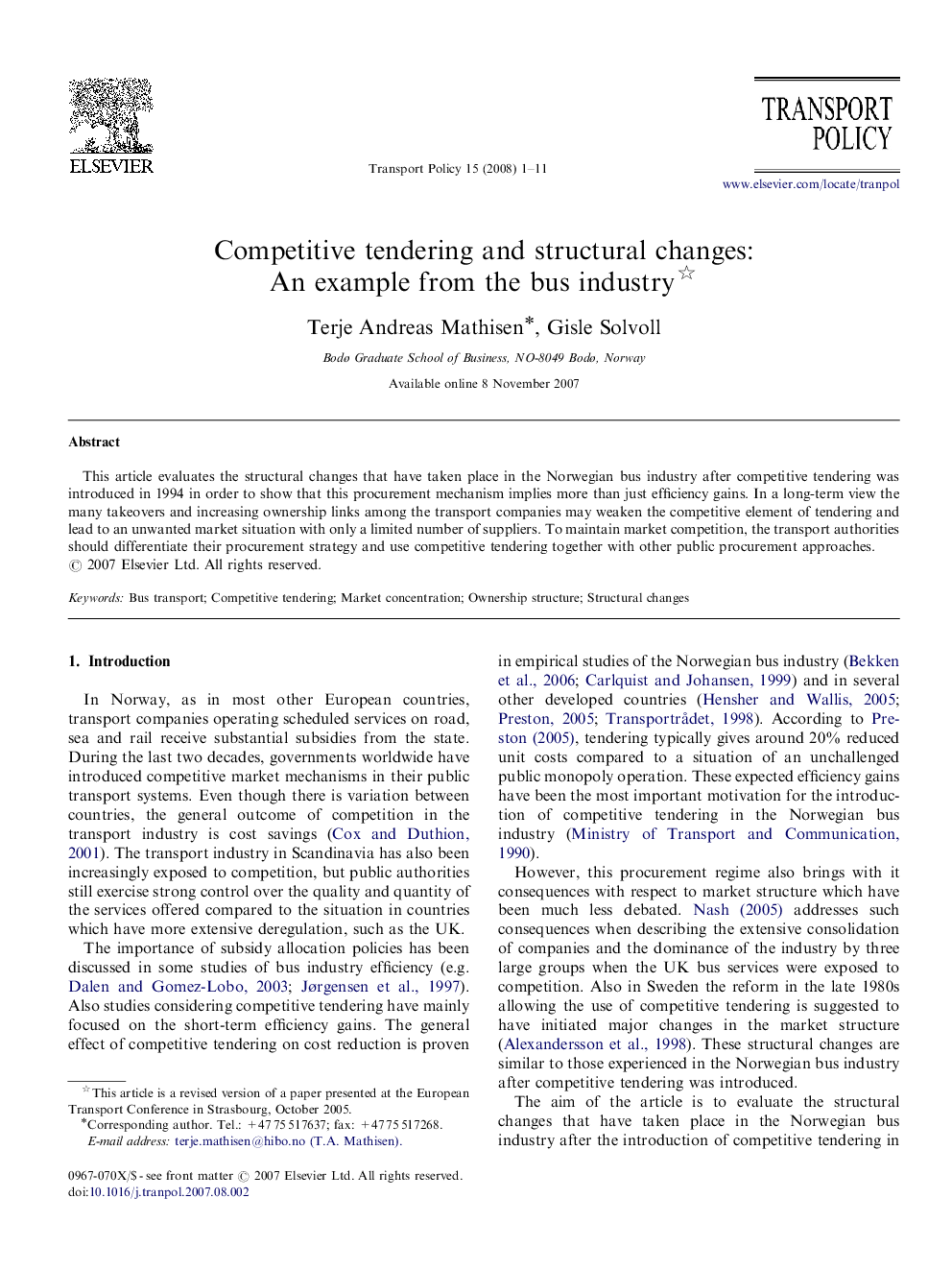| Article ID | Journal | Published Year | Pages | File Type |
|---|---|---|---|---|
| 1065409 | Transport Policy | 2008 | 11 Pages |
Abstract
This article evaluates the structural changes that have taken place in the Norwegian bus industry after competitive tendering was introduced in 1994 in order to show that this procurement mechanism implies more than just efficiency gains. In a long-term view the many takeovers and increasing ownership links among the transport companies may weaken the competitive element of tendering and lead to an unwanted market situation with only a limited number of suppliers. To maintain market competition, the transport authorities should differentiate their procurement strategy and use competitive tendering together with other public procurement approaches.
Keywords
Related Topics
Social Sciences and Humanities
Social Sciences
Geography, Planning and Development
Authors
Terje Andreas Mathisen, Gisle Solvoll,
